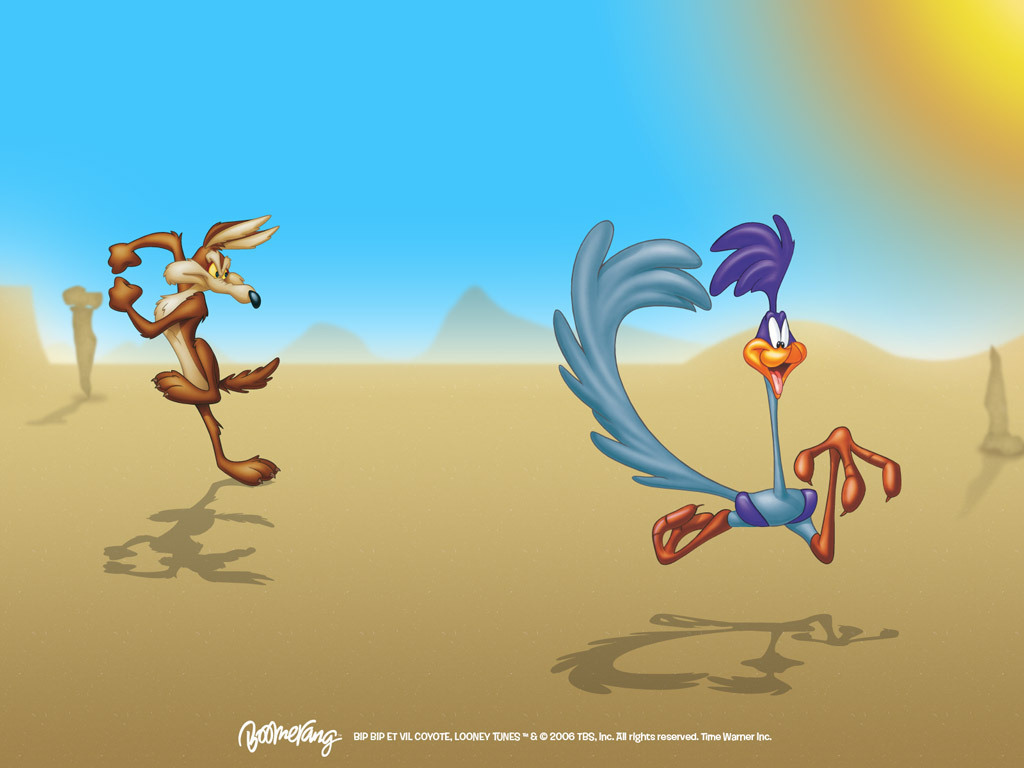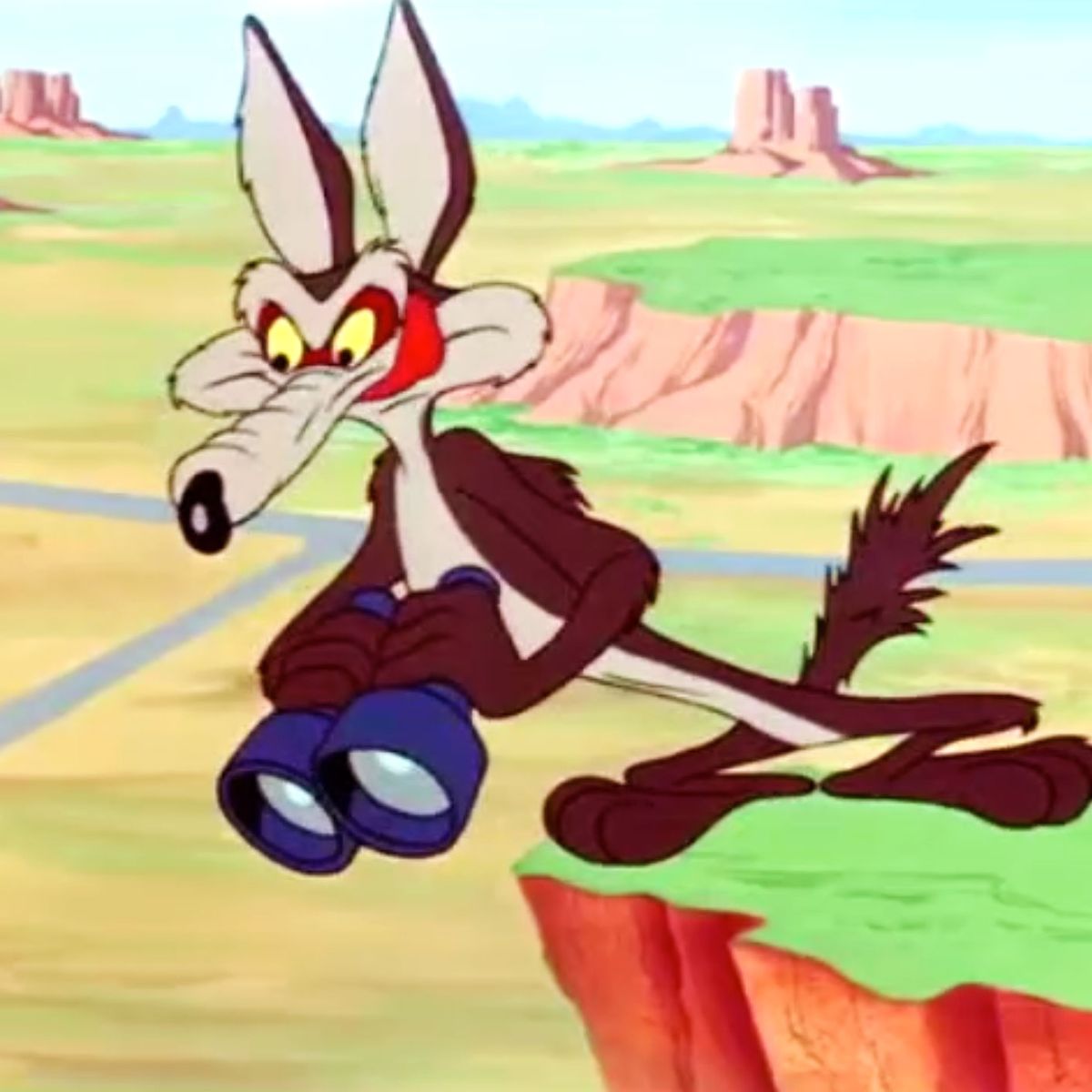
A springy block of pavement serving as an ejector? Comes loose when the bird stops by and squashes the Coyote. The metal plate to block the road? Doesn't pop up until several tries later, when it's the Coyote running past.

The dart bombs? Go after him and thwart his subsequent attempts on Beep Beep. The elastic launcher to fling him at the ground cuckoo? Comes unanchored and hurls him into a jumping cholla cactus. Coyote and Road Runner shorts are centered around the titular desert-dwelling duo, as the clever but destructively obsessive Coyote does everything within his power (and employs every item in the ACME product catalog) to capture the elusive Road Runner for dinner.

And with even less successful results for the chaser. note Yes, a real-life bird species (essentially a type of cuckoo) of the Southwestern US and Mexico.
#Roadrunner and coyote full
Coyote and the Road Runner appeared in the 1988 Touchstone/Amblin film Who Framed Roger Rabbit – they are seen silhouetted by the elevator doors, and in full in the final scene with other characters.- George Newman ( "Weird Al" Yankovic) effectively summarizing the cartoons in UHF.Īn iconic series of Looney Tunes short subjects made by Chuck Jones during The Golden Age of Animation.īasically, this is what happens if Tom and Jerry was set in the desert, and replaced the cat and mouse with a coyote and a roadrunner.

There are two scenes in Stanley Kubrick’s 1980 adaptation of The Shining where Danny Torrance and his mother, Wendy Torrance, are watching the cartoons. Coyote and the Road Runner have been frequently referenced in popular culture. In most later cartoons, the scenery was designed by Maurice Noble and was far more abstract.Īs explained by Jones in his autobiography, the success of the Road Runner shorts was rooted in their adherence to a set of rules, among them that the audience should retain equal sympathy for both the hapless coyote and his speedy prey and that Road Runner would humiliate, but never harm, the coyote. The desert scenery in the first three Road Runner cartoons, Fast and Furry-ous (1949), Beep, Beep (1952), and Going! Going! Gosh! (also 1952), was designed by Robert Gribbroek and was quite realistic. According to animation historian Michael Barrier, Julian’s preferred spelling of the sound effect was either “hmeep hmeep” or “mweep, mweep”. Julian voiced the various recordings of the phrase used throughout the Road Runner cartoons, although on-screen he was uncredited for his work. The Road Runner’s “beep, beep sound” was inspired by background artist Paul Julian’s imitation of a car horn. Early model sheets for the character prior to his debut in the 1949 cartoon “Fast and Furry-ous” identify him as “Don Coyote,” a pun on Don Quixote. Coyote’s name is an obvious pun on the word “wily.” His middle initial, “E”, is said to stand for “Ethelbert” in one issue of Looney Tunes & Merrie Melodies Comics, but its cartoonist did not intend to make it part of the official continuity, making his middle name non-canon to the show. He’s always hungry.” Chuck Jones added that he created the Coyote/Road-Runner series as a means of parodying traditional “cat-and-mouse” cartoons like Tom & Jerry (which the director was to work on later in his career, ironically enough). Coyote on Samuel Clemens’ book Roughing It, in which Samuel describes the coyote as a “long, slim, sick, sorry-looking skeleton” and a “living, breathing allegory of the desire to want. While he is usually silent in the regular Coyote / Road-Runner shorts, in these solo outings he speaks with a refined, ego-maniacal, almost English-sounding accent provided by Mel Blanc.Ĭhuck Jones based Wile E. appears separately as an adversary of Bugs Bunny in five cartoons from 1952 to 1963: “Operation: Rabbit”, “To Hare Is Human”, “Rabbit’s Feat”, “Compressed Hare”, and “Hare-Breadth Hurry”. Coyote utilizes elaborate plans and absurdly complex gadgets, often from ACME, but he fails every time. In each cartoon, to try to catch his prey, rather than his natural guile, Wile E. To date, 48 cartoons have been made featuring these characters (including the computer-animated shorts), most of which were directed by Chuck Jones.


 0 kommentar(er)
0 kommentar(er)
